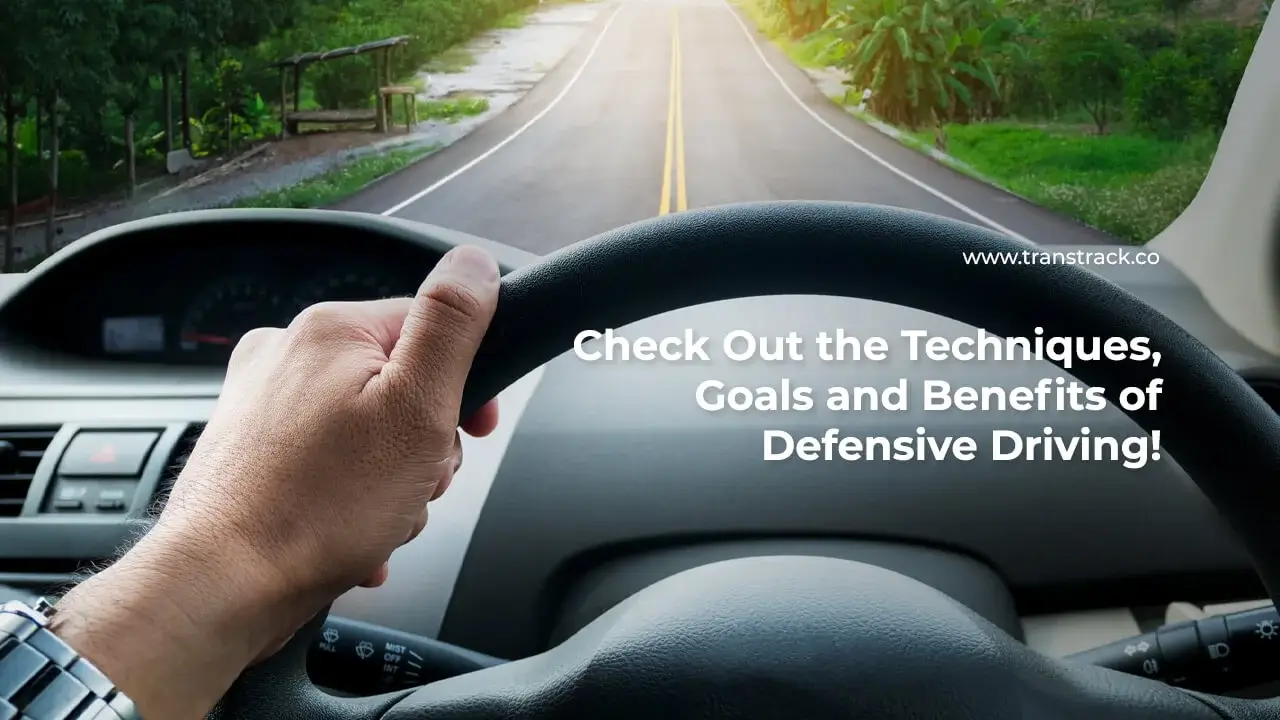
Defensive driving: two simple words that have deep meaning when it comes to your own defense on wheels. Every day, we share the road with many different types of drivers, vehicles, and potential hazards. Traffic accidents can happen in the blink of an eye, and sometimes, we have no control over the behavior of other drivers.
However, in a world full of uncertainty, there is a method we can put into practice to increase safety and keep our vehicles safe. This is defensive driving, an approach that not only changes how we drive, but also how we perceive the traffic around us.
In this TransTRACK article, we will explore the important concepts and principles of defensive driving. We will invite you to understand its purpose and benefits, as well as learn practical techniques that you can apply every time you hit the road. Defensive driving isn’t just about driving more carefully; this is key to avoiding accidents and keeping you, your passengers, and others sharing the road with you safe. Visit https://www.myimprov.com/defensive-driving/new-york/ for more detailed information.
What is meant by defensive driving?
Defensive driving is a concept in driving that emphasizes efforts to drive in a more careful, alert and defensive manner to reduce the risk of traffic accidents. The main principle of defensive driving is to anticipate potential dangers on the road, act wisely to avoid them, and always be ready to overcome unsafe behavior from other drivers.
Some key principles of defensive driving include:
- Be alert: Always maintain alertness when driving, especially on busy roads and in bad weather.
- Obey traffic rules: Following traffic rules and speed limits is important for safety.
- Avoid aggressive drivers: Avoid confrontations with angry or aggressive drivers. It is better to give way and maintain a safe distance.
- Observing the environment: Always pay attention to road conditions, changes in traffic, and danger signs such as traffic lights and signs.
- Safe distance: Always maintain a safe distance from vehicles in front, so as to have time to respond if they make a sudden maneuver.
- Avoid using devices: Avoid using cell phones or other devices while driving, as these can distract and increase the risk of accidents.
- Implement safe maneuvering techniques: Using signal lights, making careful lane changes, and stopping at stop signs or red lights are examples of safe maneuvering techniques.
Defensive driving aims to help reduce the risk of accidents, protect drivers, passengers and other road users, and help create a safer and more responsible driving environment. This can be a very important approach to minimize traffic accidents and maintain travel safety.
What is the purpose of defensive driving?
The main goal of defensive driving is to increase road safety and reduce the risk of accidents. Some specific goals of defensive driving include:
Prevent Accidents
Prevent traffic accidents by anticipating dangers and taking appropriate action to avoid them.
Protecting Life and Property
Reduce the risk of injury or damage to the vehicle by driving defensively and alertly.
Reduces the Risk of Serious Accidents
By following the principles of defensive driving, we can reduce the chances of being involved in a serious or fatal accident.
Reduces Stress
Driving carefully and defensively can help reduce stress associated with traffic and driving in potentially risky environments.
Obey Traffic Laws
Obeying traffic rules is one of the important goals of defensive driving, because it helps prevent violations and legal action.
Reducing Operational Costs
Defensive driving can also help reduce fuel costs and vehicle maintenance costs by reducing excessive acceleration and braking.
Reducing Workplace Accidents
Defensive driving also applies to commercial drivers, and one of its goals is to reduce the risk of workplace accidents, especially for drivers carrying out duties in business vehicles.
Maintaining Driver Reputation
Driving well and defensively can help maintain a reputation as a responsible and safe driver.
Defensive driving is a proactive approach to driving that focuses on preventing accidents rather than simply responding to situations as they arise. By understanding and applying its principles, drivers can achieve these goals and contribute to road safety.
Advantages of defensive driving
Defensive driving has a number of benefits that include comfort, safety and economy. The following is a further explanation of these benefits:
Comfort
Defensive driving can create a more comfortable driving experience. By always being aware of road hazards, you can reduce surprises and stress while driving.
Following traffic rules and maintaining a safe distance from vehicles in front can also create a smoother traffic flow and reduce congestion.
Safety
Safety is one of the main benefits of defensive driving. By driving defensively, you can avoid accidents or at least reduce their impact.
Anticipating other drivers’ dangerous behavior and taking precautions such as avoiding aggressive drivers can help protect yourself and your passengers.
Economical
Defensive driving can also save you money. By driving more efficiently, you can reduce your vehicle’s fuel consumption, save money at the gas pump, and reduce exhaust emissions.
Avoiding serious accidents or injuries will also save you money on vehicle repairs and medical care.
In addition to these three main benefits, defensive driving can also help you maintain a good driver track record, which can be beneficial in terms of insurance and your reputation as a driver. In addition, applying defensive driving principles can help create a safer and friendlier traffic environment for all road users, which will ultimately benefit society as a whole.





Merci à Gianfranco, membre du projet translatewiki.net (http://translatewiki.net/) pour sa sympathique traduction en italien de l’article français sur l’Installation d’Okawix sous Linux.
grazie mille 🙂 Matthieu, de Linterweb.
Commentaire by Matthieu — 17 janvier 2011 @ 19:12